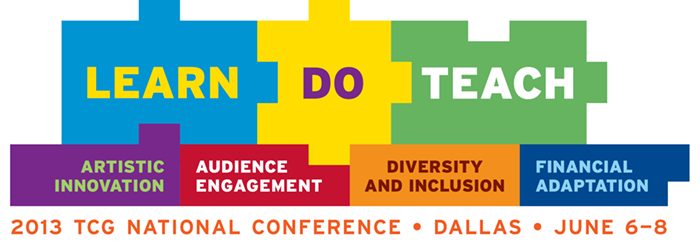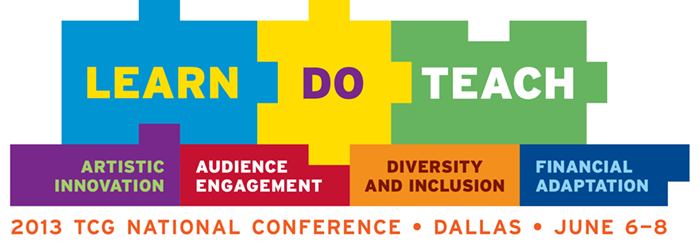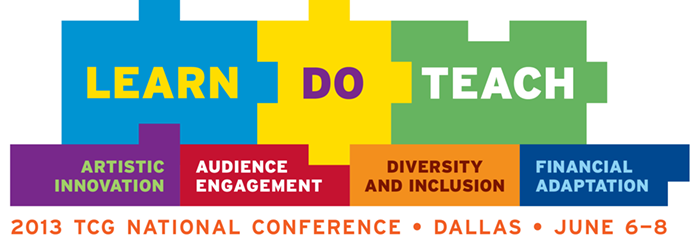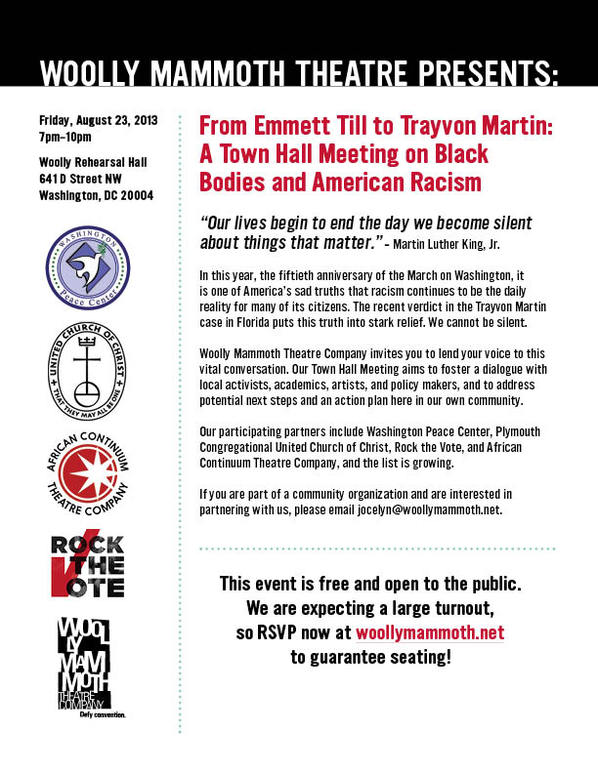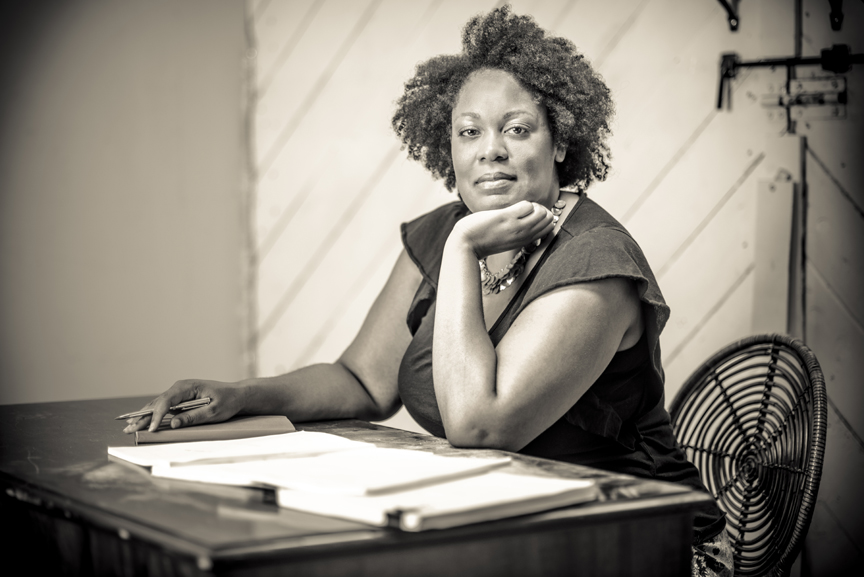 Once again, Norman Allen, Renee Calarco and I served as mentors to young playwrights who had been awarded the 2013 Playwrights Discovery Award as part of The Kennedy Center's Department of VSA and Accessibility. This year’s distinquished recipients were chosen from more than 350 applications nationwide and an excerpt of their work will be presented at the Kennedy Center as part the 11th Annual Page-to-Stage Festival. In my next post, I'm going to introduce you to the mentors and share their experience and the role of mentorship! For now, here's more information about the reading and the wonderful young playwrights!!! The John F. Kennedy Center for the Performing Arts presents the 28th Annual Playwright Discovery Performance Staged readings of four award-winning student scripts Sunday, September 1, 2013 at 6:00 p.m. MILLENNIUM STAGE SOUTH I had a wonderful experience again this year, so wanted to check in with Norman and Renee. They were kind enough to share their thoughts. Please enjoy and I hope to see you on Sunday! 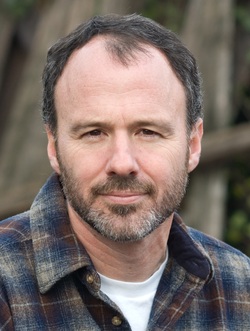 What excited you about working with VSA Playwrights Discovery Program again this year? I had such a fantastic time working with the program last year that I jumped at the opportunity to return. The process itself is rather dramatic. You spend several weeks working with your young playwright by phone and email. You get to know them and their work and their goals. You share ideas about what it means to collaborate with actors and directors. Then suddenly the day comes when they arrive in Washington and you get to be in the same room together. Last year, it was especially interesting to watch the young playwrights during the rehearsal process. I think it’s always difficult and complicated when a playwright lays their work before other artists. It takes a level of maturity to be open and flexible, and yet also hold fast to your central vision. A lot of adult playwrights I know have never mastered this. To watch young writers move toward it can be very moving. Who is your playwright and why should audiences come experience his/her play? Will Hedgecock is a brilliant young writer, with an incredibly mature comic sense. His play Bad Days is an exploration of depression, how it affects a person, and how that person is perceived by others. But he does this with a light, comic touch. It’s a very difficult line to walk – taking a very serious subject and dealing with it in a humorous way. Will walks that line brilliantly. He also has a lot to say with this play. It touches on family relationships, on romance, on loyalty. It’s the portrait of a young man discovering his own strength, and I think audiences will discover some new perspectives by stepping into this story. What are your thoughts on mentorship? You know I can’t get through this interview without quoting The King and I. Mrs. Anna sings, “If you become a teacher, by your pupils you’ll be taught.” And she’s right. I spent the last year working as a mentor with the Center for Inspired Teaching, coaching teachers in DC public schools. I never left one of those classrooms without knowing more than I went in. It’s the same here. The key to mentoring is, actually, recognizing that it’s very different from teaching. You’re not there as the expert, or the one who holds all the knowledge. You’re there to enter into conversation with another artist who has similar interests and similar goals. There was definitely stuff I had to share with Will after working as a playwright for the last twenty years, but Will and I met as equals, and I think we both benefited from the experience. NORMAN ALLEN Norman Allen’s work for the stage has been commissioned and produced by the Kennedy Center, the Shakespeare Theatre Company and the Karlin Music Theatre in Prague, where his contemporary Carmen (score by Wildhorn & Murphy) ran for three years and was recently released as a 3D film. While playwright-in-residence at Signature Theatre, Allen premiered Fallen from Proust, In the Garden (MacArthur Award), and Nijinsky’s Last Dance (Helen Hayes Award, Outstanding Play), with subsequent productions across the U.S. and Europe. A member of Playwrights Arena at Arena Stage, his recent projects include Word Dance Theater’s inter-disciplinary Once Wild: Isadora in Russia, an adaptation of George Eliot’s Daniel Deronda, and upcoming productions of Carmen in Tokyo and Seoul. 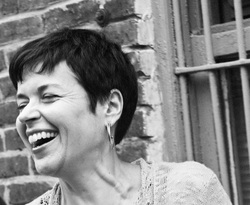 What excited you about working with VSA Playwrights Discovery Program again this year? Last year, I had such a great time—and learned so much from my mentee—that I absolutely jumped at the chance to work with VSA again. I love working with young playwrights because they’re still exploring and learning and doing astonishing things with their scripts. And their energy is contagious! Last year, after the weekend was over, I dove right back into a script I’d been struggling with. There’s something about the community of young writers that’s so inspirational. Who is your playwright and why should audiences come experience his/her play? Mickey Liebrecht is 16 and thinks big. Really big. Her play, BROKEN BODIES, has a cast of 13. Several characters speak American Sign Language. It’s a play about broken bodies…broken relationships…and the ultimate healing that comes with time. Also, Mickey’s got an amazing ear for dialogue, which is something you just can’t teach. Though her play has 13 characters, each one of them has his or her own unique voice. It’s quite an accomplishment. (A note: the excerpt we’ll be hearing at Millenium Stage does not involve all 13 of those characters!) What are your thoughts on mentorship? I love it. We so often talk about “giving back” to our communities in one way or another, but I have to admit that I feel like I’m taking more than I’m giving. Again, it’s that energy and enthusiasm that inspires me so much. And I think we all need mentors—no matter how old we are or how many hours we’ve spent writing and revising. It helps to have someone to not only guide you, but to also act as a sounding board and peer. It’s more of a give-and-take relationship, which I just love. RENEE CALARCO Renee Calarco is a playwright, teacher and performer. Her plays include The Religion Thing (2013 nominee for the Charles MacArthur Award for Outstanding New Play), Short Order Stories (2007 recipient of the Charles MacArthur Award), The Mating of Angela Weiss, Bleed, First Stop: Niagara Falls, If You Give a Cat a Cupcake, and others. Her plays have been produced, developed, and commissioned by Theater J, Charter Theater, Geva Theatre, Project Y, Adventure Theatre, Doorway Arts Ensemble, and the Source Theatre Festival. Renee teaches both playwriting and comedy improv at The Theatre Lab, and she teaches playwriting at George Washington University. She’s a founding member of The Welders and a proud member of The Dramatists Guild. Fun random fact: she’s also a licensed professional tour guide. 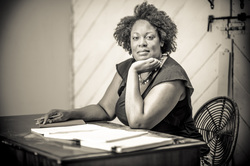 What excited you about working with VSA Playwrights Discovery Program again this year? The mission of the program is what drew me back. Also, it’s wonderful to be a part of the professional experience that these young playwrights get to experience. It’s amazing to be at the beginning of a process with a young playwright. I get to all the things to her that I wish had been said to me in terms of honoring voice and vision for the play. Both years, I was in the process of writing my own play and I learned a lot from each meeting about coming back to the “What if?” and about remembering what originally drew me to the story and characters in the first place. What’s more, any and all advice I gave to my mentee, I turned back and gave to myself! Finally, there’s nothing like getting that late night text that says, “I finished the next draft! It’s only its way!” It’s beautiful to be able to celebrate that success with someone who understands that feeling. Who is your playwright and why should audiences come experience his/her play? Nicole Zimmerer is an extraordinary young woman and I am fortunate for having spent this time with her. She is a talented, passionate, smart and hardworking writer. In her play, Falling with Grace, we meet a teenager working to figure out the rest of her life. She has cerebral palsy, but doesn’t want to be defined or limited by her disability. She is quite independent, which makes it difficult to confront feelings of the loss and anxiety that comes with major transitions in life such as graduation. She lashes out at those she loves, when really she wants to hold on them and keep every still, everything in place. It’s a beautiful play, a brilliant journey of struggle, acceptance, and hope. What I love most about this play are the relationships between women. It’s a play about mothers and daughters, and also about best friends of two generations. It’s funny, insightful and unlike any play that I’ve ever before experienced. What are your thoughts on mentorship? When I think about mentoring, I think about this quote from Benjamin Franklin: “Tell me and I forget, teach me and I may remember, involve me and I learn.” I completely agree with Norman that being a mentor different from being a teacher. It’s a process of engaging another person in rich, inspired and challenging dialogue about shared passions, thoughts and ambitions. This allows each person to come to the conversation at different points of entry, different levels of experience and different points of views. You meet in a place of respect and admiration. After reading Nicole’s play, I was excited to speak with her about the process of writing and about how we go deeper into our characters to make them bolder, richer and more realized. But this wasn’t about what I could teach her; it was about sharing what we each experienced in our lives and how that could manifest on the page. I consider myself very fortunate to have been a part of this experience. JACQUELINE E. LAWTON Jacqueline E. Lawton received her MFA from the University of Texas at Austin, where she was a James A. Michener Fellow. Her plays include Anna K;Blood-bound and Tongue-tied; Deep Belly Beautiful; The Devil’s Sweet Water;The Hampton Years; Ira Aldridge: the African Roscius; Lions of Industry, Mothers of Invention; Love Brothers Serenade, Mad Breed and Our Man Beverly Snow. She has received commissions from Active Cultures Theater, Discovery Theater, National Portrait Gallery, National Museum of American History, Round House Theatre and Theater J. Her play, Cinder Blocks, was published in Experiments in a Jazz Aesthetic: Art, Activism, Academia, and the Austin Project (University of Texas Press). A 2012 TCG Young Leaders of Color, she has been nominated for the Wendy Wasserstein Prize and a PONY Fellowship from the Lark New Play Development Center. About VSA
VSA, the international organization on arts and disability, was founded more than 35 years ago by Ambassador Jean Kennedy Smith to provide arts and education opportunities for people with disabilities and increase access to the arts for all. VSA is an affiliate of the John F. Kennedy Center for the Performing Arts. For more information, www.vsarts.org. About Education at the Kennedy Center As the national center for the performing arts, the John F. Kennedy Center for the Performing Arts is committed to increasing opportunities for all people to participate in and understand the arts. To fulfill that mission, the Kennedy Center strives to commission, create, design, produce, and/or present performances and programs of the highest standard of excellence and of a diversity that reflects the world in which we live—and to make those performances and programs accessible and inclusive.
0 Comments
 It's on the rare occasion that I get a chance to leave the city. I spend many a holiday here in the Nation's Capitol and by far, Labor Day Weekend is one of my favorites. With it, comes the Kennedy Center's annual Page-to-Stage Festival. This year, for the first time in five years, I will not be presenting a play in the festival. This made me really sad until I remember that I'm doing something even greater: I'm mentoring a young playwright who will be presenting her work in the festival for the first time as part of the VSA Playwright Discovery Award Program! The John F. Kennedy Center for the Performing Arts presents the 28th Annual Playwright Discovery Performance Staged readings of four award-winning student scripts Sunday, September 1, 2013 at 6:00 p.m. MILLENNIUM STAGE SOUTH “We are inspired by the work and enthusiasm of these talented high school students,” said Betty Siegel, Director of VSA and Accessibility at the Kennedy Center. “These works tell important stories from a unique perspective, and we are proud to support the development of these young writers.” This extraordinary, worthwhile and inspiring program is an annual competition that invites middle and high school students to take a closer look at the world around them, examine how disability affects their lives and the lives of others, and express their views through the art of playwriting. Young playwrights with and without disabilities can write from their own experience or about an experience in the life of another person or a fictional character. The program began in 1984, and has continued annually since. . This year’s distinquished recipients were chosen from more than 150 applications nationwide and an excerpt of their work will be presented at the Kennedy Center as part the 12th Annual Page-to-Stage Festival. The award winning plays include The Broken Ornament by Margaret Abigail Flowers, Bad Days by Will Hedgecock, Sons of Atlantis by Nik Kerry, Broken Bodies by Mickey Liebrecht, Sertraline Lullabies by Elana Loeb, Cal Sheridan: Not Suffering by Cal Sheridan, Joanna’s Baby by Dimitra Skouras, Love Like Anything by Nathan Wilgeroth, and Falling with Grace by Nicole Zimmerer. The young playwrights will engage with seasoned professional playwrights, directors and actors to refine their work and developed their playwriting skills. I'm in the finest of company, as many of my esteemed colleagues are taking part including playwright and previous Playwright Discovery Competition winner Janet Allard; award-winning D.C. playwright Norman Allen; award-winning D.C. playwright Renée Calarco; D.C.-based director and actor Lee Mikeska Gardner; award-winning dramaturg and director Sonya Robbins-Hoffmann; award-winning Chicago-based theater artist Michael Patrick Thornton; and award-winning D.C.-based playwright Karen Zacarias will spend the weekend coaching, mentoring and working with the young playwrights. In my next post, I'm going to introduce you to the mentors and share their experience and thoughts on the role of mentorship. For now, here's more information about the reading and the wonderful young playwrights. About the Plays and Playwrights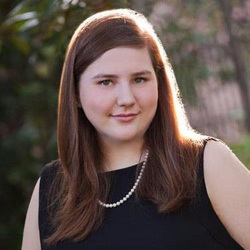 The Broken Ornament by Margaret Abigail Flowers Margaret Abigail Flowers, 17, originally hails from Houston, Texas, and has recently graduated from Interlochen Arts Academy in Michigan. She is the winner of numerous regional and national awards for her poetry and playwriting, including The Blank Theatre Young Playwright's Competition and multiple Scholastic Art and Writing Awards. She will be attending Stanford University in the fall of 2013 as an undergraduate student. About the Play When Sam returns to find his childhood home decorated as if it were Christmastime in the middle of July and that his sister has been lying to him about his mother's decaying mind, he begins to tear down the routine his family has established in order to achieve his own satisfaction. As he rips apart the Christmas tree, his familial bonds and own guilty conscience are put to the test and they each must look at who they are and what they won to each other and themselves. 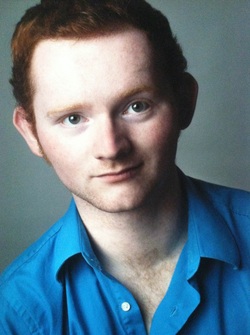 Bad Days by Will Hedgecock Will Hedgecock, 17, is a senior at Edison High School in Tulsa, Oklahoma. He is an editor of Eyrie, the school's nationally recognized journal of creative expression, an active participant in his school's drama program, as well as an Eagle Scout. Will received the regional and state All-Star awards for the OSAI one-act competition for his role as Claudius. In addition, he has produced and directed two of his own one-act plays locally. He plans to major in theatre before pursuing a graduate program in playwriting program. About the Play Due to a perceived suicide attempt and a diagnosis of depression, Carrol Jacobs is forced to confront the darkest parts of himself and the scorn and misunderstanding of his friends and relatives until he is "no longer a threat to himself or others." In this poignant, honest and surprisingly funny play, Carrol must face events in his past if he ever hopes to move on to his future.  Sons of Atlantis by Nik Kerry Nik Kerry, 19, is a recent graduate of Centerville High School in Centerville, Ohio. Those that know him would describe him as energetic and enthusiastic about life. Born in Utah in 1994, he grew up in Ohio where he spent most of his time writing or playing musical instruments. Since being published in a poetry collection in fifth grade, Mr. Kerry’s work has been seen in the Teenink.com magazine, A Celebration of Young Poets magazine, Dark Gothic Resurrected magazine, and he is the self-published author of Nevermore, a book for Kindle. He currently resides in Utah. About the Play Henry was a creator of his own city, his own universe, and his own happiness all within his day dreaming and his obsession over Water worlds and shipwrecks due to his Asperger's Syndrome. 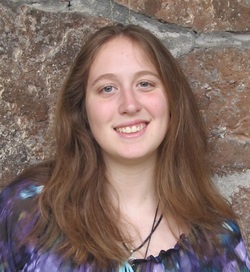 Broken Bodies by Mickey Liebrecht Mickey Liebrecht, 16, is a junior at Arapahoe High School in Littleton, Colorado. She is currently enrolled in honors and AP courses. Her greatest love is the choir she is a part of, Young Voices of Colorado, where she has been taught to read and make music. More critically, she has also learned to use music as a tool for her own creative originality—a skill she truly values. She hopes to become a profiler with the Federal Bureau of Investigation. About the Play A troubled youth has never been able to forgive himself after his father was killed and his sister made deph in a car-accident he believes he could have prevented. Three years later, he and his sister find themselves dragged off by their mother into a new town, with new faces--some old--and new discoveries of how life can go on after ANYBODY has been in ANY way, broken.  Sertraline Lullabies by Elana Loeb Elana Loeb, 18, recently graduated from Palo Alto High School in Palo Alto, California. She is a big sister, a singer-songwriter, and an avid Shakespearian. In addition to Sertraline Lullabies, she has written two one-act comedies, an one-act musical, and a full length play. This fall Elana will begin her freshman year at Cornell University. About the Play In a parked car in a hospital parking lot, two teenagers worry about a friend of theirs who is under suicide watch.  Cal Sheridan: Not Suffering by Cal Sheridan Cal Sheridan, 18, recently graduated from Boise High School in Boise, Idaho. For Cal, the stage is his life. Whether writing or acting, he loves being a part of the theatrical experience. He has written two plays: Chestnuts Roasting and Cal Sheridan: Not Suffering. His theater experience also includes working on stage crew as well as numerous acting credits. When not participating in theater, he enjoys writing scripts for cartoons and songs on Garageband. Cal studies under Dwayne Blackaller, a professional playwright at the Boise Contemporary Theatre. About the Play Cal, a young philosopher, shares with you the things you need to know but haven't been said. For the weight of the walker is less than the weight of words. 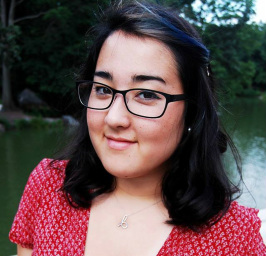 Joanna’s Baby by Dimitra Skouras Dimitra Skouras, 18, is a recent graduate of Dallastown Area High School in York, Pennsylvania, where she was involved in the music and drama programs. Her lifelong involvement in community theatre fostered her love for all aspects of the performing arts. She enjoys literature, baking, and comedic television, and it is her dream to one day write for TV. Dimitra hopes to attend college sometime in the (hopefully near) future, as soon as she figures out how to pay for it. About the Play A woman must reexamine her beliefs and make a very difficult decision when she learns that her child will be born with a disability. 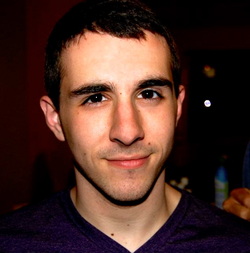 Love Like Anything by Nathan Wilgeroth Nathan Wilgeroth, 18, recently graduated from Vista Ridge High School in Cedar Park, Texas. He was Vice President of the theatre department, having won multiple school- and district-wide acting awards. In addition, he was a member of the Texas All-State Mixed Choir and President of his school's choir department. In the fall, Nathan will attend Boston University and plans to major in English Literature. About the Play Love Like Anything is a story about Roger Bolden and Sylvia Harrell, two teenagers dealing with the turmoil of their own parents' divorces. To fight against the seemingly inevitable withering of relationships, they try to convince each other and themselves of the durability of lasting love, asking themselves, "Does love exist and, if so, must it always die?"  Falling with Grace by Nicole Zimmerer Nicole Zimmerer, 19, just graduated from Westside High School in Houston, Texas. She was a member of the school’s theatre company for four years, as well as a member of National Honors Society. She has had cerebral palsy since birth and has written the words “non-progressive, non-contagious condition” on more college essays than she would like to admit. She is an avid writer and is very passionate about theatre, television, and film. Nicole will be attending the University of Houston in the fall, with plans to major in Playwriting and Dramaturgy. About the Play A seventeen-year-old girl, Grace, has dealt with cerebral palsy, anon-contagious, non-progressive condition, her whole life. This is the story of her coming to accept her disability and herself. About VSA
VSA, the international organization on arts and disability, was founded more than 35 years ago by Ambassador Jean Kennedy Smith to provide arts and education opportunities for people with disabilities and increase access to the arts for all. VSA is an affiliate of the John F. Kennedy Center for the Performing Arts. For more information, www.vsarts.org. About Education at the Kennedy Center As the national center for the performing arts, the John F. Kennedy Center for the Performing Arts is committed to increasing opportunities for all people to participate in and understand the arts. To fulfill that mission, the Kennedy Center strives to commission, create, design, produce, and/or present performances and programs of the highest standard of excellence and of a diversity that reflects the world in which we live—and to make those performances and programs accessible and inclusive. 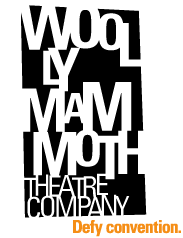 From Emmett Till to Trayvon Martin: A Town Hall Meeting on Black Bodies and American Racism “Our lives begin to end the day we become silent about things that matter.” – Martin Luther King, Jr. Woolly Mammoth Theatre Company was one of my first theatre homes. They taught me how to be a dramaturg, a craft which has served me well these past eight years. I have attended nearly every single production. I have stood in praise and enthusiasm of their programming, which reflects a commitment to diversity of form, gender, race, ability and sexual orientation. But I have never been more proud to be affiliated with them than I was this past Friday night when I took part in the town hall event. From the beginning, there was an immediate sense that folks needed to be a part of this conversation. They needed a safe, but charged place to engage and process, to validate and confront all of what they had been feeling in response to the recent verdict in the Trayvon Martin case in Florida. With the 50th Anniversary of the March on Washington upon us, now was the time for civic action and leadership. Woolly Mammoth took that the helm in our theatre community and executed it brilliantly. When I walked into the theatre, the energy of the room was palpable. It was hungry, passionate and urgent. There was a radiant sense of expectation, curiosity, and hope. Howard Shalwitz (Woolly Artistic Director) and Jocelyn Prince (Woolly Connectivity Director and Town Hall Facilitator) welcomed the panelists, facilitators, volunteers and more than 100 guests. We were invited to channel what we were feeling into action and change for the betterment of our society. We were encouraged to engage in an honest, open, and challenging conversation with local activists, academics, artists, policy makers and each member in the audience. In preparation for our convening, Jocelyn Prince worked with civic engagement expert, Michael Rohd, to shape our Goals and Rules for the evening: Woolly Mammoth Town Hall Goals
Woolly Mammoth Town Hall Rules
Once these rules and goals were agreed upon, we were then led in an Interfaith Prayer by Reverend Carolyn Boyd, Plymouth Congregational United Church of Christ. Her prayer served as a reminder that we have come together in the service of work that is greater than us. Click here to her powerful, healing and uplifting words. Then, poet and Woolly Claque Member, Ray Crawford delivered his beautiful, raw and captivating poem, Worthless. His poem was a reminder of how art can help us to contextualize an otherwise painful, disturbing and inexplicable experience. Next, Jocelyn facilitated the discussion with panelists: Reverend Carolyn Boyd, Minister of Organizational Development at Plymouth Congregational United Church of Christ; Louisa Davis, activist and Adjunct Professor of Religion and Ethics at Montgomery College; Jessica Frances Dukes, Woolly Company Member; Dr. Dennis B. Rogers, Lecturer in the Department of History and Government at Bowie State University; Gabriel Rojo, Site Manager, Identity Youth, Inc.; and Dawn Ursula, Woolly Company Member (and cast member in Woolly’s production of We Are Proud to Present…) These were the questions that were asked and the responses that really resonated: How has the outcome of the Trayvon Martin trial impacted you as a minister/activist/theater artist/academic? As a citizen? As a human being?
How would you situate the Trayvon Martin trail and verdict (as well as the ongoing national actions and dialogues in response to the verdict) within the context of the civil rights movement? Is there a linkage that you would draw between Emmett Till and Trayvon Martin?
What implications do the case and verdict have for ongoing issues in the DC community (racial profiling, police brutality, criminalization of marijuana, race relations, prison and military industrial complex, etc)? What role can DC citizens play in changing the societal conditions that contributed to the death of Trayvon and the acquittal of George Zimmerman?
Towards the end of the panel discussion, an interesting, profound and shattering point was raised about our collective understanding of Race: Success is about moving toward whiteness. This bears repeating (and perhaps even saying aloud): Success is about moving towards whiteness. There is a disturbing, frightening and undeniable truth to this statement that I feel resonating in conversations around the risk of producing plays by playwrights of color. From there, we had a brief group conversation where the audience had an opportunity to ask questions and share their own thoughts. What I found most valuable in this discussion was the sharing of essays, books and online resources:
From there, we broke out into smaller sessions for deeper investigation of these issues. We were tasked with identifying potential next steps and action plans for our own community. We were reminded to be patient, open, and generous with ourselves and others. Academics (Ray Crawford Jr.)
Activists and Policy Makers (Kymone Freeman)
Artists and Arts Workers (Jacqueline E. Lawton)
Youth and Youth Workers (Goldie Deane)
I’m writing this blog as I listen to the commemoration of the 50th Anniversary of the March on Washington. So, I will end where we began with an inspiring quote from Dr. Martin Luther King Jr.: "We are now faced with the fact, my friends, that tomorrow is today. We are confronted with the fierce urgency of now. In this unfolding conundrum of life and history, there is such a thing as being too late. Procrastination is still the thief of time. Life often leaves us standing bare, naked, and dejected with a lost opportunity. The tide in the affairs of men does not remain at flood -- it ebbs. We may cry out desperately for time to pause in her passage, but time is adamant to every plea and rushes on. Over the bleached bones and jumbled residues of numerous civilizations are written the pathetic words, "Too late." There is an invisible book of life that faithfully records our vigilance or our neglect. Omar Khayyam is right: "The moving finger writes, and having writ moves on." More than anything, “the fierce urgency of now” was the real power of the Woolly Mammoth Town Hall event. We all entered the theatre that night for different reasons. We all came from different life experiences. We all have different beliefs for how to solve the problems of systemic racism and injustice. However, we all have a clear understanding that NOW is the time for this work to happen and that we can only achieve great success by coming together as a unified force. 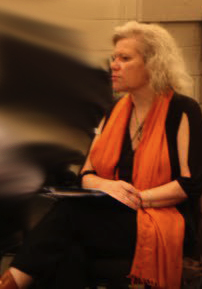 Fifty years ago, Washington DC Wednesday morning, August 28 1963 - my mother turns to me and says "Heidele, go put on your shoes. We're going downtown to do something important. Don't tell your father" We head downtown on the bus and make our way towards the Washington Monument, there is a huge crowd below, we manage to work our way near the far left corner of the Reflecting Pool and can go no further. There are thousands and thousands of people there, facing the Lincoln Monument, listening to sounds coming out of speakers which seem far away so it's a bit hard to hear. There is talking and singing…the men and many women around us, as dark or darker than my mother, are both serious and elated. Then a man starts to speak who has the crowd enraptured. I ask my mother is this is Moses? - somehow I got it into my head that we were at a big play, a pageant, and the women around us smile and laugh. I can't understand much of what he is saying, but the crowd is getting more and more excited…I hear words "wa wa wa weem" and then "free" and the crowd shouts and surges and I half-topple into the Reflecting Pool. The women shriek and help pull me out and hug me and pat me and laugh with my mother. I have never seen her this happy. I will never see her this happy again. I perhaps have never been happier than that day of our shared secret and a feeling of a moment so filled with hope and love and a sense of what I would come to know as solidarity. Years later someone pointed out that this was my baptism. Years and years later I realized my mother was happy because she, as a dark Italian/Croatian with probable Turkish blood woman, was for one time around people whom she looked more like, with whom she felt more comfortable than the people she was around who were part of my father's world…my father who would shout at her not to get too much sun because she'd look like a N…… I was going to go down to Washington today, in honor of that day…but I hear they have fenced off the Reflecting Pool, and Obama will take the time of the speech, and thinking about it I thought perhaps continuing to hold on to the memory and how it will shape future actions was more appropriate. So I got off the bus and am back home writing this. Some things have changed since that day. Much has not. The issue of racism, jobs, poverty, inequity, a sham of democracy in this country has not changed. I thank and honor you, Martin Luther King and all the people who marched and participated in that day and so many days before and after and who fought, and still fight, for justice and equality and the real US/American Dream. Mother, gone a few years later, I thank and love you. I still have that dream. -- Morgan Jenness, Wednesday, August 28th, 2013 About Morgan Jenness
Morgan Jenness spent over a decade at the New York Shakespeare Festival/Public Theater, with both Joseph Papp and George C. Wolfe, in various capacities ranging from literary manager to Director of Play Development to Associate Producer. She was also Associate Artistic Director at the New York Theater Workshop, and an Associate Director at the Los Angeles Theater Center in charge of new projects. She has worked as a dramaturg, workshop director, and/or artistic consultant at theaters and new play programs across the country, including the Young Playwrights Festival, the Mark Taper Forum, The Playwrights Center/Playlabs, The Bay Area Playwrights Festival, Double Image/New York Stage and Film, CSC, Victory Gardens, Hartford Stage, and Center Stage. She has participated as a visiting artist and adjunct in playwriting programs at the University of Iowa, Brown University, Breadloaf, Columbia and NYU and is currently on the adjunct faculty at Fordham University. She has served on peer panels for various funding institutions, including NYSCA and the NEA, with whom she served as a site evaluator for almost a decade. In 1998 Ms. Jenness joined Helen Merrill Ltd., an agency representing writers, directors, composers and designers, as Creative Director. She now holds a position in the Literary Department at Abrams Artists Agency. In 2003, Ms. Jenness was presented with an Obie Award Special Citation for Longtime Support of Playwrights. Morgan Jenness has worked in various capacities from literary manager to associate producer at the Public Theater, New York Theater Workshop and LATC and as a dramaturg, workshop director, artistic consultant and teacher at theaters, play development programs and universities across the country. Formerly at Helen Merrill Ltd. she is currently creative consultant at Abrams Artists Agency. 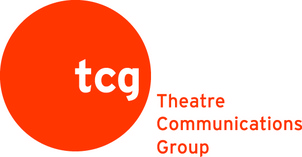 The following post is part of a blog salon series focusing on how theatre artists are responding to Trayvon Martin’s death, the trial and verdict, and the subsequent cultural response to those events. This series grew out of a series of discussion between myself, The New Black Fest’s artistic director Keith Josef Adkins, TCG's Associate Director of Communications August Schulenburg and TCG’s Director of Communications & Conferences Dafina McMillan. Please let us know if you'd like to contribute. GUS SCHULENBURG: How has the outcome of the Trayvon Martin trial impacted you as a theatre artist? As a citizen? As a human being? JACQUELINE LAWTON: As a theatre artist, it has cemented my desire to use each and every play that I write as a tool for social justice and change. Otherwise, the time and words were wasted. As a citizen, I am keenly aware that the struggle for civil rights is as much needed now as it ever was. What’s more, it is my duty, so long as I am alive on this earth, to do everything in my power to promote social awareness, race consciousness and compassion. I want to bring people together around these issues and encourage dialogue that moves us to a place of understanding, appreciation and respect for difference. As a human being, to be perfectly honest, I feel quite broken. Gus, if I wanted to have children, they would be brown. God help me, if they are boys. And there’s nothing, I can do to keep them safe … to keep them beyond the reaches of racism. GS: What actions are you taking, if any, to respond to that outcome? JL: At first, it was very difficult for me to respond. All I could think about was my brother and how this could have been him. I remembered the conversations my father would have with him about his behavior and attitude in the presence of whites. We were raised in East Texas … not too far from where, in 1999, James Byrd Jr. was beaten, chained by his ankles to the back of a pick-up truck and dragged to his death for more than two miles. Instead of responding, I read a lot of what was being written and listened to what was being said. I shared what resonated deeply with me on Twitter and Facebook. I connected with friends. The next morning in a fit of tears, I wrote a poem called, On the Morning After Not Guilty. I’m trying to respond … But a gunshot and shouts of no justice, no peace ring in my ears. I’m trying to respond to what has happened to Trayvon Martin … to his family … to the mothers of boys born with brown skin … to each of us across this nation. But a gunshot and shouts of no justice, no peace ring in my ears. I’m trying to respond to the fact that when I see young boys with brown skin on the street, on the metro, in the grocery store and in the classroom, I silently pray this prayer: Bless you, stay safe, keep your cool, and may you live long enough to see your grandchildren and a time when strangers don’t silently pray this prayer. But a gunshot and shouts of no justice, no peace ring in my ears. I’m trying to respond without remembering the cautionary words my mother and father shared with my brother when they taught him that his actions, words, glance and gaze could get him killed … not just for their intent, but for his brown skin. But a gunshot and shouts of no justice, no peace ring in my ears. I’m trying to respond without tears of pain, sorrow and disappointment to this egregious crime and miscarriage of justice. But a gunshot and shouts of no justice, no peace ring in my ears. I’m trying to respond in a way that moves this nation forward. But a gunshot and shouts of no justice, no peace ring in my ears. I’m trying to respond … But even that wasn’t enough… GS: How have you engaged, or will you engage, with those who feel differently about that outcome? JL: Yes, I have and am happy to continue doing so. Out of the blue, a woman I went to middle and high school with contacted me on Facebook. She accused me of hate mongering by sharing the articles and said that the only way race relations would improve in this country is if African Americans were taught not to make a distinction between the races. She said a number of other things as well and here this is what I wrote in response:
Then I went on to share a very personal story that I haven’t shared with anyone in a very long time: I remember once in 6th grade, when a mutual “friend” and her crew walked over to me after I had taken a drink from the water fountain. This friend said to me, “You know there was a time when you couldn’t drink out of the same water fountain as us.” I looked at her and said, “Yes, I remember. My parents told me about that.” Then she said, ” Don’t you wish you were white? Don’t you think it would be easier?” Now, as much as I knew it would be easier, I didn’t want to give her that truth. Instead, I said, “I want to be white as much as you want to be black.” The look of horror and disgust on her face taught me everything I needed to know about issues of race in America. We exchanged another round of emails and I responded with the following:
These issues are extremely complicated and larger than the two of us, but we listened to one another and spoke candidly. This is progress, but even that wasn’t enough … GS: What role does theatre have in changing the conditions that contributed to the death of Trayvon Martin and the acquittal of George Zimmerman? JL: With theatre, we can reflect the important issues, values, and challenges going on in society. I agree with Sarah Bellamy, Associate Artistic Director at Penumbra Theatre, who says that: “As image makers, we have an important role to play in moving audiences beyond superficial and stereotypical representations of peoples and cultures and toward three dimensional representations that encourage deeper learning with honor and respect.” I also agree with Dr. Manuel Pastor, director of the Program for Environmental and Regional Equity (PERE) at the University of Southern California, when he says “there is a need to push the conversation beyond that of self-expression to one of community building and democracy.” But in order for theatre to do this, we have to take responsibility for how to perpetually update the narrative: What theatre is now with regards to race, gender, ability, sexual orientation etc.? How is it reflective of the change that is happening in America? Theatres in this country who find themselves serving White, Black and Latino communities should be holding town hall forums and discussions around these issues. They should be commissioning local writers to capture the response of this moment in history so that lessons learned are discussed in depth and carried over to future generation so that such an egregious crimes and senseless loss of life never happens again. GS: How do the racial/cultural power dynamics of the theatre field challenge or reinforce the conditions that contributed to that outcome? JL: When theatres do not present work by playwrights of color or cast actors of color or hire people of color in leadership positions, this sends a clear message that our voices, experience and expertise are not welcome, relevant, respected or valued. In such instances, I feel that theatres are reinforcing the conditions that led to this outcome. We have to do better. Our season planning needs to reflect out 501c3 status to serve our communities. GS: So much of this work to make change grows out of the shining example of artists, cultural organizers and civil rights workers in the past and present. From whose example do you draw strength? JL: I am inspired by the efforts of Sarah Bellamy, Khanisha Foster, Ilana Brownstein, Adam Thurman, Otis Ramsey-Zoe, Shirley Serotsky, Megan Sandberg-Zakian, Al Heartley, and Andre Lancaster. I draw strength from Nina Simone, Audra Lorde, Sydney Poitier, Elizabeth Catlett, Maya Angelou, Toni Morrison, Jill Dolan, Derek Goldman, Gregg Henry, Jojo Ruf and James Baldwin. I am invigorated by the efforts of TCG. I have never seen an organization more committed to improving the conditions of diversity and inclusion in the American Theatre. The fact that their efforts are transparent, self-reflective and action-based is extraordinary to me. If you'd like to contribute your own post to one of these or any other TCG Circle series, please contact August Schulenburg, Theatre Communications Group's Associate Director of Communications, to learn how.
If you're interested in joining TCG's online year-round conference community, check out Conference 2.0. 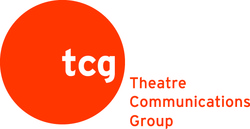 This post is a part of the Diversity & Inclusion blog salon that I led as part of the 2013 TCG National Conference: Learn Do Teach in Dallas. I am re-posting it here on my blog: Day Three of the conference is one that I’ll never forget. It was a hard day. I was taken to a deep, raw and honest place. I wasn’t ready for it. I wasn’t ready for how powerful and emotionally charged it turned out to be. At the same time, I should have seen it coming. It was not only inevitable, it was necessary for deep growth and lasting change to take place. I spent the morning processing my thoughts and typing my notes from the day before. I finished with moments to spare, but ended up missing the morning Diversity and Inclusion Learning Session and purely for selfish reasons. The day before, I learned from my dear friend, Jojo Ruf (General Manager, National New Play Network) that there was a Starbucks in her hotel. This was music to my ears, because I’d been craving a soy chai latte all week. Now, my hotel had a Peet’s Coffee, which it turns out Jojo happens to prefer over Starbucks. So, we made arrangement to buy each other’s caffeinated beverage of choice and in doing so, I was able to attend an Artistic Innovation Learning Session. But this was great; after all, I am a playwright! Living the Margo Jones Legacy: Breaking the Habit of New Play Development The speakers were Anne Cattaneo (Dramaturg and Director, Lincoln Center Theater Directors Lab), Anthony Clarvoe (Playwright, Edgerton Foundation), Ben Kryosz (Artistic Director, Nautilus Music-Theater), Jason Loewith (Artistic Director, Olney Theatre Center), Lisa Adler (Co-Artistic/Producing Director, Horizon Theatre Company) and Mara Isaacs (Producing Director/Founder, McCarter Theatre Center/Octopus Theatricals). The focus of the conversation was to examine ways in which the new play sector could continue to grow and support playwrights:
What I appreciated most about this session was the discussion around the trajectory of some of our more established playwright’s careers. It never hurts to be reminded that Arthur Miller, Christopher Durang, Sam Shepard and Tennessee Williams had to hone and shape their creative voices and artistic visions. These giants of the American Theatre grew into the playwrights they have become. It was a process that took time, faith and risk … three things the American Theatre needs to reinvest its energy and passion in. I’m glad to have had the opportunity to sit in on this conversation and meditate on my craft. In truth, I think it contributed to what made being a part of the next session so relevant, passionate and urgent. Diversity and Inclusion Homeroom, Session #3: Smashing the Glass Ceiling This session moderated by Carmen Morgan (Director, Leadership Development in Interethnic Relations) with panelists Jennifer Bielstein (Managing Director, Actors Theatre of Louisville; Vice President and Member of Diversity Task Force, LORT) and Teresa Eyring (Executive Director, TCG). Together, Teresa and Jennifer outlined the ways in which LORT and TCG were hoping to work together to build bridges and work more efficiently and intently towards a more Diverse and Inclusive American Theatre. LORT: Jennifer Bielstein LORT, as a management association, comprised a task force of managers from the pool of current LORT managers, to engage more deeply in its commitment to diversity and inclusion. The task force interviewed almost 20 people of color and recruiters in the field from LORT and outside – and the input from those interviews is what has shaped their process and thinking:
Jennifer ended her presentation with a great question and one that was asked across the conference: once you’ve set this as your goal, how do you measure success? What does it look like? TCG – Teresa Eyring For the past 52 years, TCG has had a long history and commitment to diversity that began in the early stages of the organization’s development. In fact, earlier movements are echoed in the current energy of growing the organization; specifically in terms of staff, board, grant making and publications. But what are the current challenges? Teresa said, “We have the opportunity to model a new world, rather than replicating existing weaknesses in society—such as institutional racism.” TCG wants to help facilitate change over time: Diversity and Inclusion Six Point Plan
Teresa and Jennifer then wanted to hear thoughts and questions from all of us. Carmen brilliantly and respectfully facilitated this conversation. These are the major issues that were raised:
In the midst of all of this, it hit me why these same conversations were being had over and over again and why no real change has occurred…just as there is the belief that audiences won’t come out to see plays written by or about people of color, there is a core belief that people of color are not qualified for executive level management or artistic positions. This is why people of color are constantly being told that we need training, professional development and special programs. I couldn’t take it. I stood up and shared my thoughts. I shared them through tears, deep sorrow and pain, and I can’t thank TCG enough for creating such a safe space for this place of raw truth to be shared. After I sat down, Carmen then asked us all to take a moment to reflect on what had just been shared. After which, two more young leaders of color shared their thoughts and experiences, which mirrored my own. They had gone through and successfully completed special fellowships, training programs and professional development for artists and administrators of color, but still professional opportunities were not being made available to them. Here’s the thing: these programs are essential. I mean, had Blake Robison (former Artistic Director of Round House Theatre/current Artistic Director of Cincinnati Playhouse), not nominated me as a TCG Young Leader of Color last year, I would never have been able to attend the TCG Conference last year. More than paying for housing, transportation, and the conference fees, the YLC program made me visible and gave me a sense of empowerment. Even though there was a loss of funding, TCG made it possible for many of us to attend the conference this year. As I said, this was a powerful day. I’m not the same for it and I’m grateful to everyone in that room and everyone who participated in the Diversity and Inclusion Arc for giving so much of themselves and for sharing so honestly where they are in their journeys. None of this work is easy, but that’s what makes it so necessary. I’m curious to hear from others who took part in this session or any of the sessions. Your experiences and perspective are essential. I’d love to hear your thoughts on these questions and any of the issues address over the course of the day. If you're interested in joining TCG's online year-round conference community, check out Conference 2.0. 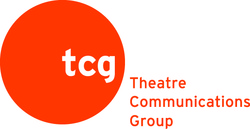 This post is a part of the Diversity & Inclusion blog salon that I led as part of the 2013 TCG National Conference: Learn Do Teach in Dallas. I am re-posting it here on my blog: Day Two of the conference was powerful, spirited and eye-opening. I was so energized from the day before and so I was open and ready to receive everything presented on Friday. I had no idea how necessary and impactful these sessions and discussion would be. I had no idea how much I would be shifted by… Race and Representation: The power of Theatre to Create a More Inclusive World led by Sarah Bellamy, Associate Artistic Director for Education at Penumbra Theatre. Before we go on, it should be known that Sarah is a true gift to the American Theatre. Her brilliant learning session was actually an excerpt of a larger workshop that she conducts around the history, evolution and impact of stereotypes. To begin, Sarah addresses the role and responsibility that theatre plays in either eliminating or perpetuating stereotypes:
To frame the conversation, Sarah posited that stereotyping is a process that relies on chains of meanings: fears and fantasies that manifest in myths. Stereotypes matter because they influence perception, which influences belief and finally access to opportunities. This is key. This is what we’re working to combat when we talk about diversity and inclusion. Next, we talked about the detrimental impact of stereotypes used as tools for comedy. This is when humor and racism is used to decide who is an “us” and who is a “them.” Sarah reminded us that:
Stereotypes act as a kind of currency within American culture. As humans we learn to sort and place value on sorting categorizing and accumulating, which is linked to capitalism. It was at this point that Sarah introduced us to the four D’s, which blew my mind and instantaneously shattered by heart:
With all of this work around stereotypes, Sarah reminded us that we have to chase the train of meaning. If we don’t understand the history of the images, then we will miss the meaning that’s been created. So when you see the image of watermelons on the White House, you understand immediate and irrevocably the incendiary intention of the message. As you can see, the session was comprehensive, challenging and necessary. There was a lot to unpack. A major question that was posed early in the session still resonates with me and deserves a great deal of meditation: how do we combat racism in a world that looks progressive? A Conversation with Ayad Akhtar with Gabriel Greene Novelist, screenwriter, playwright and winner of the 2013 Pulizter Prize for Drama for Disgraced, Ayad Akhtar is a passionate, eloquent and dynamic speaker. It was hard to take notes during this session, because I want to absorb everything he said. Fortunately, you can listen to it here. It was inspiring to hear his journey to theatre and his writing process. He grew up in a household where theatre was not a part of his growing up experience. In fact, the television show Dallas was the family’s entertainment of choice. While he knew that he wanted to be a writer when he was 15, he fell in love with theater in college. He started out writing outside of himself in a European tradition. He wanted to write something universal and didn’t think that his experiences would relate to others. As he grew older, he had a growing awareness that he was running away from something. It became clear to him that he wasn’t writing what he knew. He wasn’t writing about his identity, but that has since shifted. Towards the end of the interview, Ayad revisited Aristotle’s definition of catharsis: “the expression of emotion through pity and terror. Terror is key and is defined as when the Furies arrived on stage, women miscarried in the aisle.” This is the type of visceral response that is both religious and mass, and it’s what he strives for in his writing. It was really great to be reminded of this. By the way, I just finished reading his novel, American Dervish, which follows Hayat Shah a young Pakistani American who falls in love, discovers his faith and works through the confusion of both forces in his life. It was magnificent and absorbing. I read it in two days. His Pulitzer Prize willing play, Disgraced, will be published in the July/August issues of American Theatre Magazine and I can hardly wait. Also, he participated in an interview with Caridad Svich as part of TCG’s conversation around Artistic Innovation, which can be read here. Diversity and Inclusion Homeroom This year, the TCG Conference’s had four focused programmatic arcs--Diversity and Inclusion, Audience Engagement, Financial Adaptation and Artistic Innovation. Each day, we were divided out into homeroom sessions along our respective arc. For the Diversity and Inclusion arc, we were asked to submit have a diversity and inclusion challenge that we were wrestling with, if we wanted to hear advice and feedback from others. Understanding that Diversity and inclusion begins with awareness and advocacy, but that it must shift to action, these homerooms were a great way to strategize and build allies in our efforts. Here are some of the questions that were raised:
As these questions were asked, we quickly realized that we weren’t alone in our struggles. Here are some of the useful suggestions that were made:
We ended the conversation reflecting on Dr. Manuel Pastor’s presentation from the day before. He reminded us that the importance of theatre to social discourse. With theatre, we can reflect the important issues, values, and challenges going on in society. This is the kind of discourse that can only happen in the theatre. But in order for theatre for theatre to do this, we have to update the narrative: What theatre is now with regards to race, gender, ability, sexual orientation etc.? How is it reflective of the change that is happening in America? Always, I’d love to hear your thoughts on these questions and any of the issues address over the course of the day. If you're interested in joining TCG's online year-round conference community, check out Conference 2.0. 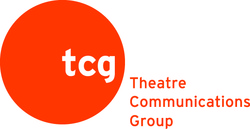 This post is a part of the Diversity & Inclusion blog salon that I led as part of the 2013 TCG National Conference: Learn Do Teach in Dallas. I am re-posting it here on my blog: I left the Diversity and Inclusion Institute completely exhausted, but in the most exhilarating and inspiring way. I was excited for the day ahead and could hardly wait to share what I had experienced in my learning sessions and homerooms. Young Leaders of Color Check-In with Teresa Eyring, Emilya Cachapero and Dafina McMillan I spent the morning writing about the Diversity and Inclusion Institute and then headed to lunch with my fellow TCG Young Leaders of Color. This year was a reunion of sorts, because new leaders had not been added owing to a lack of financial support for the program. As disheartening as that sounds, TCG is smart about how they are using this time. They are assessing on the initial goals of the program, celebrating the extraordinary efforts and achievements of the more than 70 members and working to grow the program in a new and exciting way. More on all of this as it develops, but essentially the program will be shifting from a nomination and spotlight at the conference to a year round program that offers mentorship opportunities and professional development training programs. No doubt, the enthusiasm around this idea was felt throughout the entire state of Texas! For some time, the Young Leaders of Color have wanted to be seen as a resource. One of the major ways we want to be of service is by leading diversity and inclusion training programs in organizations. This way, the burden would not have to be on the people of color in your organization. In our open discussion, the following issues were raised and deeply resonated with me:
Intergenerational Leaders of Color Check-In led by Benny Sato Ambush Following the Young Leaders of Color lunch, I headed to the Intergenerational Leaders of Color check-in led by the incomparable Benny Sato Ambush. It was a rainy afternoon, but the room was densely and beautifully packed. I couldn’t help but smile as more and more chairs needed to be added. However, I immediately saw that the room was not as diverse as it could have been. I saw very few colleagues from Asian, South Asian, Middle Eastern or Native American theatre communities. This served as a reminder to me that when we think about how to be more inclusive within our conversation about diversity, we have to think beyond Black and White. There was a strong Latino contingency, but I wanted more. The major issues raised in this conversation would appear again and again throughout the conference. Here are a few of them:
In a particularly charged moment in the discussion, there was an observation that culturally specific theatres aren’t establishing longer term relationships with artists, specifically playwrights. In response, there was an observation that culturally specific theatres don’t have the finances to compete against the larger theatres for the continued growth and life of the playwright. While I don’t think this is always the case and know of many examples where playwrights have remain invested the theatre while working a day job or even at another theatre, the financial health of the artist is an issue that came up again and again at the conference. Emilya ended the session with two inspiring gems that I had to share and actually use as guiding principles of my work:
Diversity and Inclusion Arc Homeroom: Making Change/Making Meaning - Demographic Shifts Economic Uncertainty and the Role of the Arts This session was phenomenal. It was presented by Dr. Manuel Pastor, director of the Program for Environmental and Regional Equity (PERE) at the University of Southern California. Pastor provided an humorous, enlightening and accessible look at the shifting demographic and cultural currents in our country. Author of numerous books on equity, economics, demographics and social change, Dr. Pastor is also the recipient of many grants and fellowships Danforth Fellow, Guggenheim Fellow and recipient of grants from the Irvine Foundation, Rockefeller Foundation, Ford Foundation, National Science Foundation, Hewlett Foundation, MacArthur Foundation and many more. What’s more, he’s the father of an actor/musician and a dancer. So, this conversation was passionate, informative and personal. These were the major points that spoke to me during his presentation:
Creating a Common Language: The Real Presence of Race in the Artist-to-Artist and Art-to-Audience Relationship Jasmine Guy, actress, writer and producing director of Atlanta’s True Colors Theatre Company and Susan Booth, director and artistic director of Atlanta’s Alliance Theatre spoke candidly about race relations in the rehearsal hall, the organization-to-artist relationship, and in the space between the work and the community. At the start of the conversation, Susan Booth recommended that we all read: It’s the Little Things: Everyday Interactions That Anger, Annoy, and Divide the Races by New York Times veteran Lena Williams. This is an “honest look at the interactions between blacks and whites-the gestures, expressions, tones, and body language that keep us divided.” More than anything, this discussion posited a series of powerful questions that I’d like to share here and would love your thoughts:
If you attended the conference, I’d love to hear your thoughts on these questions and any of the issues address over the course of the day. If you're interested in joining TCG's online year-round conference community, check out Conference 2.0. From Emmett Till to Trayvon Martin: A Town Hall Meeting on Black Bodies and American Racism8/12/2013 Everyone,
The following town hall is free and open to the public. I hope to see you there. We are expecting a large turnout, so please RSVP to guarantee seating, by clicking here. |
My BlogI'm a playwright, dramaturg, and teaching artist. It is here where you'll find my queries and musings on life, theater and the world. My posts advocate for diversity, inclusion, and equity in the American Theatre and updates on my own work. Please enjoy!
Categories
All
Archives
June 2020
Reading List
|

